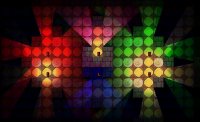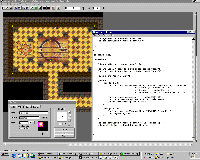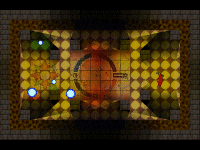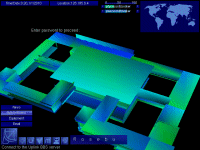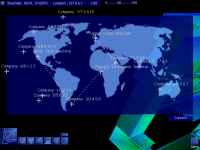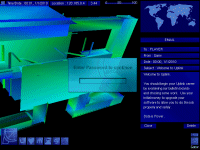The game in question was far too massive for its own good, requiring thousands of graphics, maps and sounds to populate the eight planets that were part of the plot. It was epic in the true RPG sense of the word - involving a war between the Gods with the player at the centre, and it was also impossible to ever complete for those very reasons. In the end, after eighteen months of work on the Shadows Engine and numerous spin-off projects started by other people, the project was canned. The developers wanted to make a game, but were spending all of their time making a game engine. The Lead Developer had stared to think about developing a game about hacking, based on that idea from two years ago, and his interest in Shadows was mostly gone.
Terminal
Its such a deceptively simple idea to start with - basic resource gathering, with missions earning you money and the ability to progress to the next level and perform more difficult missions. Obvious enemies spring to mind - the police, the FBI, or other hackers who hold a grudge against you. Basic mission types start appearing - steal corporate data (like the film Hackers), test somebody's security (like Sneakers), frame somebody so they are arrested (the Net), start World War III (Wargames), or steal a Government Agent list (Mission:Impossible). The connecting factor here is of course movies.
Realism Versus Fun
From the word Go, we all knew this game could turn out to be crushingly boring. Hacking is just not that much fun. Telnet just isn't that entertaining. And in any case, the real thrills of hacking (the sense of danger and paranoia, the intellectual challenge, the boasting rights) would be very hard to reproduce in a game.
The answer lies with Hollywood. In the movies, the issue of dramatising Hacking has already been dealt with. It becomes necessary to step back and replace the reality of the situation with a more exciting form of fiction. It's less realistic, but its still based on fact, and it's much more engaging. Hollywood frequently takes things a little too far, but the reasoning is sound.
With these ideas in mind, the members of Introversion Software started work on a game called 'Terminal', which would make a game out of the art of Hacking. It would be full 3D virtual reality - just like the movie Johnny Mnemonic. You would be able to enter your own computer and see the CPU as a soaring skyscraper, and you would routinely be attacked by Virus software which you would have to destroy. Target computer systems looked like small cities. The game design originally looked more like a surreal flight simulator than anything else. In hindsight it is clear what happened - the team was sucked into the mistaken idea that all games require 3D graphics to be any good, and from that the game design headed off in completely the wrong direction.
Two months and a couple of prototypes later, the original design was ditched to be replaced with a new game - Uplink. The game aims, settings and ideas were the same but the interface and look was totally different. The first month of any project is a melting pot - people throw ideas around and you are convinced they will work, but then you try them and realise they just don't. The difficulty is appreciating the mistake, throwing away the work done so far and starting again.
As it turned out, this kind of rewrite would occur twice more at later stages in the project. This is probably why it took over two years to complete the game, and why the game came so close to not appearing at all.
